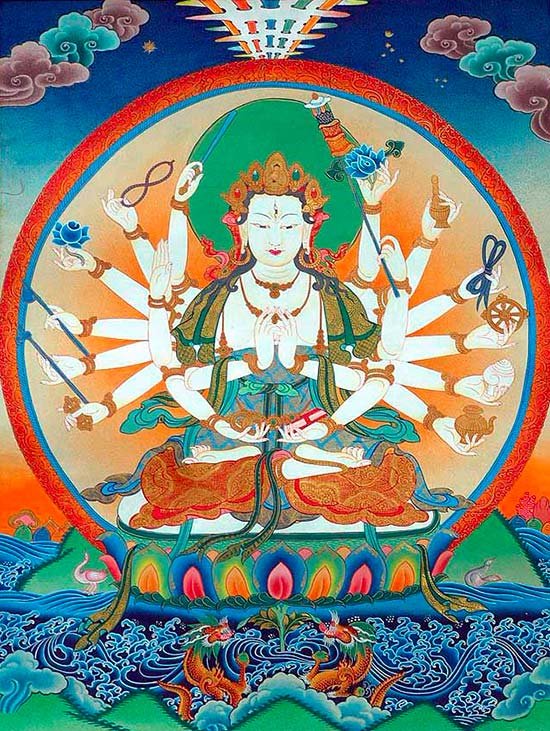Maha Prajnaparamita Sastra
by Gelongma Karma Migme Chödrön | 2001 | 941,039 words
This page describes “nature, object and distribution of the nine notions” as written by Nagarjuna in his Maha-prajnaparamita-sastra (lit. “the treatise on the great virtue of wisdom”) in the 2nd century. This book, written in five volumes, represents an encyclopedia on Buddhism as well as a commentary on the Pancavimsatisahasrika Prajnaparamita.
V. Nature, object and distribution of the Nine Notions
Question. – What is the intrinsic nature (svabhāva) of these nine notions, what is their object (ālambana) and where are they contained (saṃgṛhīta)?[1]
Answer. – As their nature, they have the grasping of characteristics (nimittodgrahaṇa); they are contained in the aggregate of form (rūpaskandha).
They are also contained in a small part of the foundation of mindfulness on the body (kāyasmṛtyupasthāna),[2] in the desire realm (kāmadhātu) or also in the first, second and fourth dhyāna.
The person who has not yet renounced desire (avītarāga) and who has a distracted mind (vikṣiptacitta) belongs to the domain of the desire realm (kāmadhātvavacara); the person who has renounced desire (vītarāga) belongs to the domain of the form realm (rūpadhātvavacara).
Eight notions, those of the bloated corpse (vyādmātaka), etc., are contained in kāmadhātu and the first and second dhyānas. The notion of pure bone (asthisaṃjñā) is contained in kāmadhātu, the first second and fourth dhyānas. As there is a great deal of happiness (sukha) in the third dhyāna, this one is exempt from the notion of horror.
Footnotes and references:
[1]:
These questions are dealt with in detail in Vibhāṣā, T 1545, k. 40, p. 206c; Kośa, VI, p. 152; Nyāyānusāra, T 1562, K. 59, p. 672b. Aśubhā has as its nature the absence of desire (alobha). The ascetic can produce it in ten levels: kāmadhātu, dhyānantara, the four dhyānas and their four respective sāmantakas. The object of aśubhā is the visible – color and shape – in the realm of rūpadhātu. Only men produce it. For its aspect (ākāra) it has the horrible and therefore does not show the sixteen aspects of the noble truths, impermanence, etc. As it is the act of attentiveness on an imaginary object (adhimuktimanasikāra), it is impure (sāsrava). Finally, it may be acquired either by detachment (vairagyā) or by practice (prayoga). The Kośakārikā, VI, II, condenses all this into one line: alobho daśabhūḥ kāmadṛśyālambā nṛjāśubhā.
[2]:
This is why the meditation on the horrible is found in the sūtras dedicated to the smrṭyupasthānas, e.g., Majjhima, I, p. 58.
